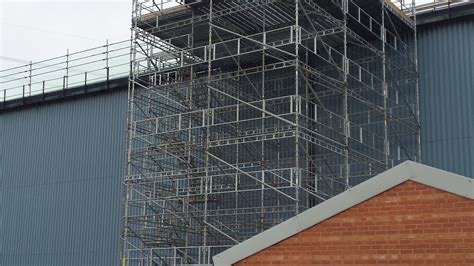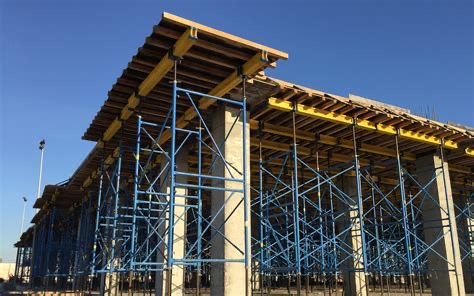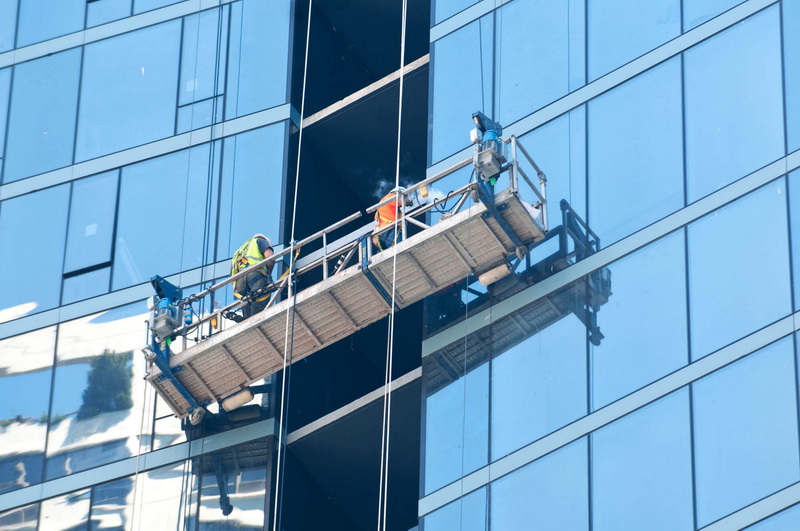Content Menu
● Understanding Scaffolding
● Types of Scaffolding Systems
>> 1. Single Scaffolding
>> 2. Double Scaffolding
>> 3. Cantilever Scaffolding
>> 4. Suspended Scaffolding
>> 5. Trestle Scaffolding
>> 6. Mobile Scaffolding
>> 7. System Scaffolding
● Additional Types of Scaffolding Systems
>> 8. Tube and Clamp Scaffolding
>> 9. Kwikstage Scaffolding
>> 10. Stair Scaffold Towers
● Choosing the Right Scaffolding System
● Safety Considerations
● Conclusion
● FAQ
>> 1. What are the most common types of scaffolding systems?
>> 2. How do I choose the right scaffold type for my project?
>> 3. What safety measures should be taken when using scaffolds?
>> 4. How often should scaffolds be inspected?
>> 5. Can I use multiple types of scaffolds on one project?
● Citations:
Scaffolding systems are essential for providing safe access and support during construction, maintenance, and repair projects. With various types of scaffolding available, each designed for specific applications and project requirements, understanding these systems is crucial for ensuring safety and efficiency on job sites. This article will explore the different types of scaffolding systems used in construction, their features, advantages, and applications.

Understanding Scaffolding
Scaffolding refers to temporary structures used to support workers and materials during construction or maintenance activities. These structures are designed to provide a safe working platform at various heights while allowing easy access to different areas of a building or structure. Scaffolding systems typically consist of three main components: standards (vertical supports), ledgers (horizontal supports), and transoms (horizontal cross-sections).
Types of Scaffolding Systems
There are several types of scaffolding systems used in construction, each with unique characteristics and applications. Below are some of the most common scaffolding system types:
1. Single Scaffolding
Single scaffolding, often referred to as bricklayer's scaffolding, is primarily used for brick masonry work. It consists of vertical standards placed parallel to the wall being constructed, with horizontal ledgers connecting them. Putlogs are inserted into holes in the wall to provide additional support.
- Applications: Ideal for brickwork and low-height structures.
- Advantages: Simple design and easy to assemble.
2. Double Scaffolding
Double scaffolding is commonly used for stone masonry due to the difficulty of creating holes for putlog anchoring in stone walls. This type features two rows of scaffolding: one parallel to the wall and another set away from it, which provides additional stability.
- Applications: Suitable for stone masonry projects.
- Advantages: Offers greater strength and stability compared to single scaffolding.
3. Cantilever Scaffolding
Cantilever scaffolding is used when the ground cannot support standard scaffolds due to obstacles like walls or uneven terrain. This system extends out from a building or structure without any ground support.
- Applications: Useful for buildings with limited ground access.
- Advantages: Allows work at height without disturbing the ground below.
4. Suspended Scaffolding
Suspended scaffolding consists of a platform suspended from a structure using ropes or cables. This type is ideal for tasks that require access to high elevations, such as window washing or painting.
- Applications: Commonly used on high-rise buildings.
- Advantages: Provides flexibility in height adjustment.
5. Trestle Scaffolding
Trestle scaffolding is a lightweight system supported by trestles (A-frame supports). It is primarily used for low-level work and can be easily moved around.
- Applications: Suitable for indoor projects like painting or maintenance.
- Advantages: Lightweight and portable.
6. Mobile Scaffolding
Mobile scaffolding consists of scaffold towers mounted on wheels, allowing easy movement across the work site without disassembly. This type is particularly useful for tasks that require frequent repositioning.
- Applications: Ideal for painting, plastering, and drywall installation.
- Advantages: Increases efficiency by reducing setup time.
7. System Scaffolding
System scaffolding, also known as modular or frame scaffolding, uses prefabricated components that fit together without traditional clamps or couplers. This type allows for rapid assembly and disassembly while providing high load-bearing capacity.
- Applications: Suitable for large-scale projects like high-rise buildings.
- Advantages: Quick setup and versatility in design.

Additional Types of Scaffolding Systems
In addition to the primary types mentioned above, there are several other specialized scaffolding systems:
8. Tube and Clamp Scaffolding
Tube and clamp scaffolding consists of steel tubes connected by clamps, allowing for flexible configurations that can adapt to various structures. This type is highly versatile and can be used in complex projects.
- Applications: Suitable for bridges, access towers, and custom structures.
- Advantages: Offers high adaptability to different shapes and sizes.
9. Kwikstage Scaffolding
Kwikstage scaffolding is a modular system made from galvanized steel that can be easily assembled into various configurations. It is known for its durability and resistance to weather conditions.
- Applications: Commonly used in commercial construction.
- Advantages: Quick assembly with interlocking components.
10. Stair Scaffold Towers
Stair scaffold towers incorporate staircases within their structure, providing safe access to different levels without needing separate ladders. This type is beneficial when working in multi-level buildings.
- Applications: Useful in construction and renovation projects.
- Advantages: Enhances safety by providing stable access between levels.
Choosing the Right Scaffolding System
Selecting the appropriate scaffolding system depends on several factors:
1. Project Requirements: Consider the specific needs of your project, including height requirements and load capacities.
2. Site Conditions: Assess the terrain and any obstacles that may affect scaffold placement.
3. Duration of Use: Determine whether you need a temporary solution or a more permanent structure based on project timelines.
4. Safety Regulations: Ensure compliance with local safety regulations regarding scaffold use and inspections.
Safety Considerations
Safety is paramount when using any scaffolding system. Here are key safety measures to follow:
- Regular Inspections: Conduct thorough inspections before use to identify potential hazards or defects.
- Proper Training: Ensure all workers are trained in scaffold assembly, use, and safety protocols.
- Use Personal Protective Equipment (PPE): Workers should wear appropriate PPE such as helmets, harnesses, gloves, and non-slip footwear while working on or around scaffolds.
Conclusion
Understanding the different types of scaffolding systems used in construction is essential for ensuring safety and efficiency on job sites. Each system has unique features tailored to specific applications, making it crucial to select the right type based on project requirements and site conditions. By adhering to safety protocols and conducting regular inspections, construction teams can create a safer working environment while maximizing productivity.

FAQ
1. What are the most common types of scaffolding systems?
The most common types include single scaffolding, double scaffolding, cantilever scaffolding, suspended scaffolding, mobile scaffolding, system scaffolding, tube and clamp scaffolding, kwikstage scaffolding, trestle scaffolding, and stair scaffold towers.
2. How do I choose the right scaffold type for my project?
Consider project requirements such as height needs, load capacities, site conditions (like terrain), duration of use (temporary vs permanent), and compliance with local safety regulations when selecting a scaffold type.
3. What safety measures should be taken when using scaffolds?
Key safety measures include conducting regular inspections before use, ensuring proper training for workers on scaffold assembly and safety protocols, using personal protective equipment (PPE), and adhering to local regulations regarding scaffold use.
4. How often should scaffolds be inspected?
Scaffolds should be inspected before first use, after severe weather events or incidents affecting their integrity, at least every 30 days during use if there's a fall risk over 4 meters (approximately 13 feet), or more frequently based on site conditions.
5. Can I use multiple types of scaffolds on one project?
Yes! Depending on your project's needs—such as varying heights or specific tasks—you can utilize multiple types of scaffolds simultaneously as long as each type meets safety standards and is properly maintained.
Citations:
[1] https://www.crewscaff.com.au/10-types-of-scaffolding-you-might-need-for-your-building-project
[2] https://www.youtube.com/watch?v=MQJx_yw6HCo
[3] https://www.indeed.com/career-advice/career-development/types-of-scaffolding
[4] https://www.youtube.com/watch?v=K-2TdtfKYNU
[5] https://www.seawayscaffold.com/rental/types-of-scaffolding
[6] https://www.youtube.com/watch?v=6lfCM0O2yio
[7] https://www.wm-scaffold.com/scaffolding-system/
[8] https://www.youtube.com/watch?v=RCdHJ2Dkjfg
[9] https://accessone.co.nz/different-kinds-of-scaffolding/
[10] https://ausf.com.au/types-of-scaffolding/






















